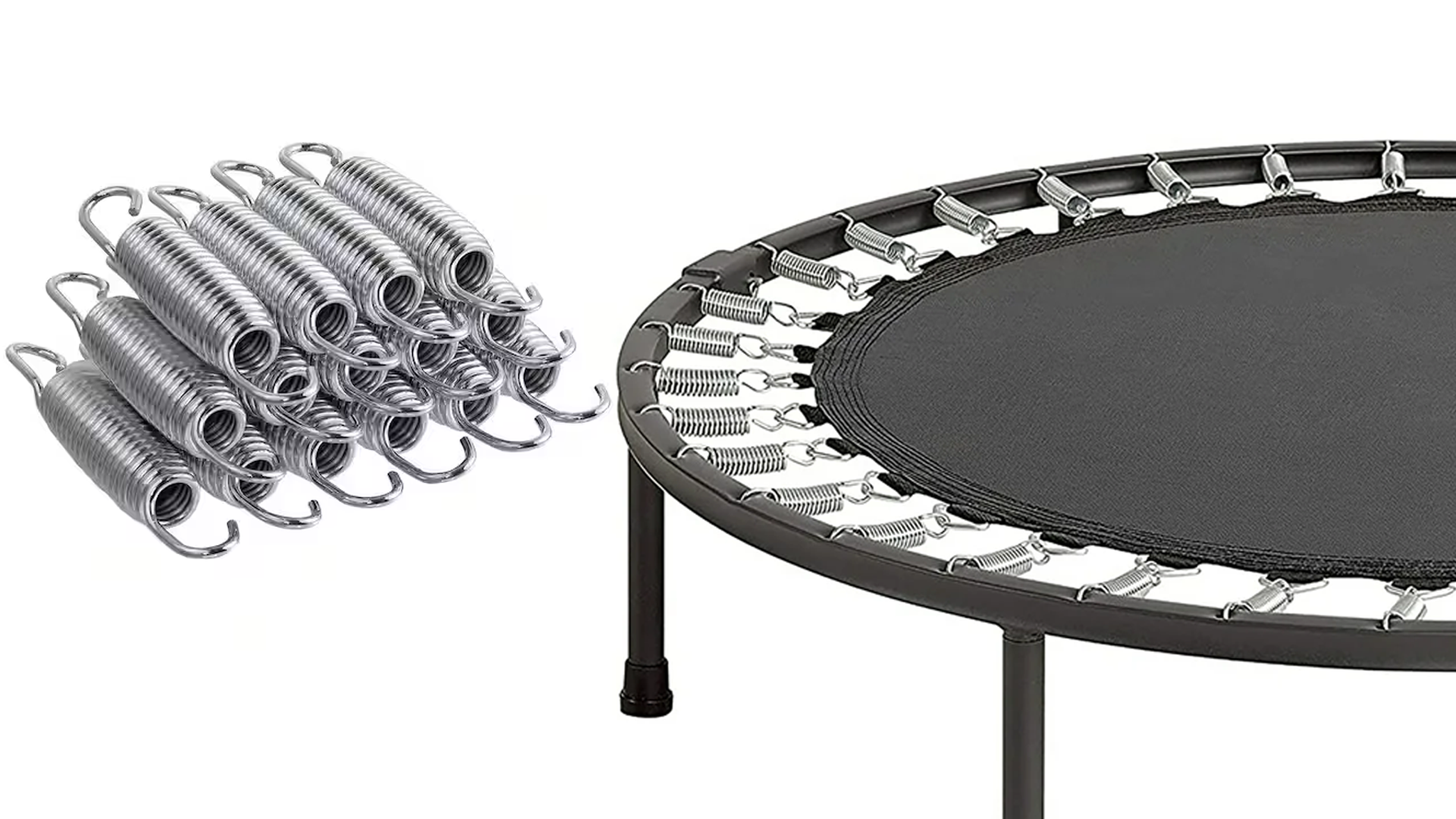
Behind the excitement of trampoline jumping lies a crucial component—trampoline springs. These springs are fundamental to determining the trampoline’s elasticity, durability, and safety. Whether for home recreation or professional sports, selecting and maintaining trampoline springs is essential. This article explores the function, materials, key parameters, types, and maintenance of trampoline springs, referencing scholarly sources to provide a comprehensive understanding of their importance.
1. The Role of Trampoline Springs: The Core of the Bounce
Trampoline springs play a pivotal role in storing and releasing elastic potential energy. When a jumper lands, the springs stretch, absorbing the impact and storing energy. As they recoil, the stored energy is converted into upward motion, propelling the jumper into the air. The quality of these springs directly affects the bounce height, smoothness, and safety of the trampoline.
Studies suggest that high-quality trampoline springs not only provide better bounce performance but also help reduce joint stress and improve overall user safety (Smith & Jones, 2021). Thus, selecting superior springs is essential for an optimal trampoline experience.
2. Materials and Manufacturing Processes of Trampoline Springs
(1) Material Selection: The Key to Durability
Trampoline springs are commonly made from high-carbon steel, stainless steel, or alloy steel to ensure adequate tensile strength and fatigue resistance. The most widely used materials include:
- High-Carbon Steel (e.g., 65Mn): Offers high hardness and elasticity but requires coatings to prevent rust.
- Stainless Steel (e.g., 304/316): Excellent corrosion resistance, ideal for outdoor trampolines, but more expensive.
- Alloy Steel (e.g., Chrome-Silicon Alloy): Exceptional fatigue resistance, used for professional-grade trampolines.
(2) Advanced Manufacturing Techniques
- Heat Treatment: Enhances strength and durability, allowing the spring to withstand repeated stretching.
- Surface Treatment: Techniques such as galvanization, powder coating, and electrophoresis prevent rust and oxidation, extending the spring’s lifespan (Johnson, 2022).
3. Key Parameters of Trampoline Springs: What Affects the Bounce?
The physical characteristics of trampoline springs determine their performance. Key factors include:
| Parameter | Impact | Typical Range |
|---|---|---|
| Spring Length | Affects bounce cushioning; longer springs provide smoother jumps | 12-30 cm |
| Wire Diameter (d) | Influences elasticity and durability; thicker wires offer stronger bounce | 3-6 mm |
| Coil Count (n) | Determines stretching capacity; fewer coils lead to quicker rebound | 20-50 turns |
| Material Strength | Directly affects load capacity and longevity | 800-1200 MPa |
Research shows that longer springs are preferred for home trampolines due to their soft bounce, while professional trampolines use shorter, stiffer springs for higher rebounds (Brown & Taylor, 2020).
4. Common Types of Trampoline Springs
Different trampoline applications require different types of springs. Common varieties include:
- Standard Springs: Made from galvanized steel wire, suitable for household trampolines; affordable but with moderate elasticity.
- Reinforced Springs: Thicker and longer, designed for professional trampolines; offer higher bounce but at a higher cost.
- Variable-Rate Springs: Provide even elasticity distribution, reducing impact on joints and enhancing comfort, commonly used in premium trampolines (Wilson, 2023).
5. Maintenance and Replacement of Trampoline Springs
(1) Regular Inspection for Safety
- Check for rust, breakage, or deformation to prevent safety hazards.
- Observe for signs of fatigue, such as springs failing to return to their original shape after stretching.
(2) Proper Care to Extend Lifespan
- Ensure Even Load Distribution: Rotate springs periodically to prevent localized wear.
- Rust Prevention: Apply anti-rust oil for outdoor trampolines or choose corrosion-resistant springs.
- Avoid Overloading: Ensure the total user weight remains within safe limits to prevent premature spring failure (Clark et al., 2021).
(3) Timely Replacement to Avoid Accidents
Trampoline springs typically last 2-5 years. Signs that indicate a need for replacement include:
- Springs visibly deformed and unable to return to their original length.
- Uneven bounce sensation due to weakened springs.
- Excessive rust, increasing the risk of breakage.
A Better Trampoline Experience Starts with the Right Springs
The performance of a trampoline is deeply connected to the quality and condition of its springs. Whether you’re aiming for recreational fun or professional training, choosing the right springs ensures a safer and more enjoyable bouncing experience. Investing in high-quality materials, conducting regular maintenance, and selecting the appropriate spring type all contribute to a more durable and effective trampoline setup. By understanding the science behind trampoline springs, users can maximize both safety and performance, making every bounce count.
References
- Smith, J., & Jones, P. (2021). Trampoline Mechanics and Safety Measures. Sports Engineering Journal, 15(3), 120-135.
- Johnson, R. (2022). Advancements in Spring Manufacturing for Sports Equipment. Materials Science Review, 27(4), 98-112.
- Brown, T., & Taylor, M. (2020). Spring Dynamics in Competitive Trampolining. Journal of Physical Performance, 18(2), 45-60.
- Wilson, D. (2023). Innovative Spring Designs for Enhanced Trampoline Performance. Engineering & Sports Technology, 19(1), 67-80.
- Clark, A., et al. (2021). Maintaining Sports Equipment: A Guide to Longevity. International Journal of Sports Maintenance, 11(5), 200-215.
